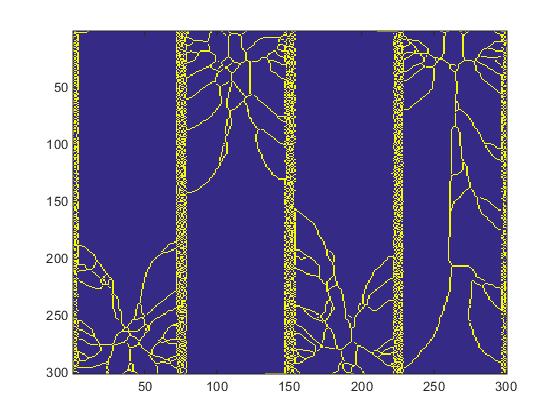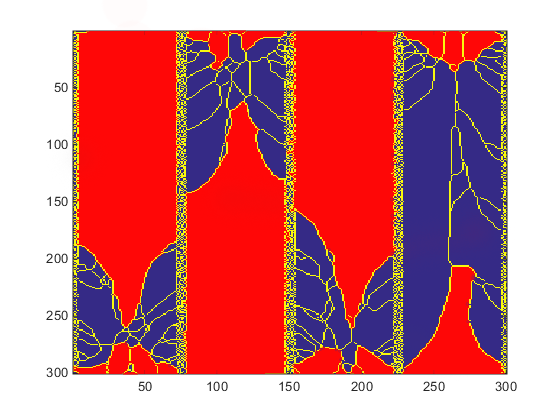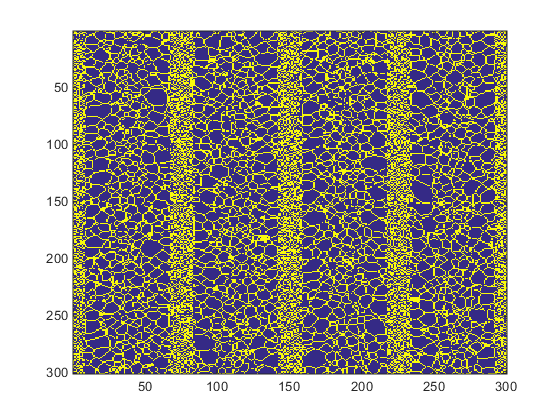It became apparent that the latest revision of Chord Length Distribution (CLD) algorithm is only accurate for a subset of microstructures. The definition of chord length is the length of the line joining points lying on two boundaries. However in order for the chord length to be meaningful we need to make an important distinction between the grain boundaries and the boundaries of the simulation volume. This logic demands that the chords that span the distance between simulation boundary and the first grain boundary be dismissed. This method is detailed in the CLD2 post.
Of course throwing out various numbers of chords from our microstructures introduces inaccuracy in itself, but this is mitigated if the percent of total lengths dismissed is small relative to the total. We were operating under the assumption that this criterion holds true for all microstructures only to realize that there are many structures where it is completely invalid. The figure below shows an example of a possible algorithm failure mode.
 Fig.1. The grain boundary section of a large-grained class of microstructures.
Fig.1. The grain boundary section of a large-grained class of microstructures.
 Fig.2. Diagram of omitted chords.
Fig.2. Diagram of omitted chords.
Yet many other microstructures have small grains throughout the volume, as shown below:
 Fig.3. The grain boundary section of a small-grained class of microstructures.
Fig.3. The grain boundary section of a small-grained class of microstructures.
 Fig.4. Diagram of omitted chords.
Fig.4. Diagram of omitted chords.
One possible solution is to calculate the total omitted chord length and check the validity of the criterion for every microstructure. A threshold can be set to separate the dataset into 2 classes.
- Class 1: Total omitted chord length is below threshold and CLD accurately captures grain geometry distribution.
- Class 2: Total omitted chord length is above threshold and CLD accurately captures grain geometry distribution.
This modification is a work in progress.